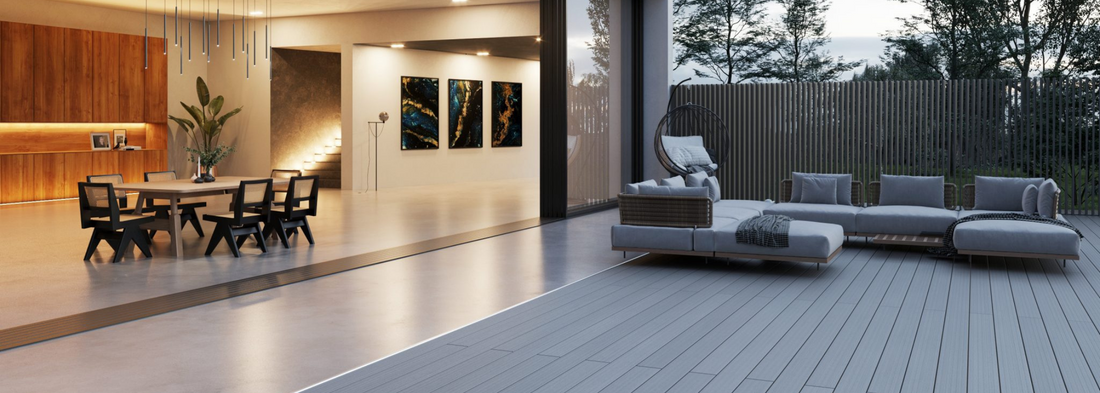
Getting Started with Composite Cladding
Getting Started with Composite Cladding
Transforming your living or working space can be an immensely rewarding endeavor, offering the chance to breathe new life into your surroundings. One effective way to achieve a stunning and functional result is by fitting composite cladding. Composite cladding is a versatile and durable material that can revamp the appearance of your walls, whether they're indoors or outdoors. In this comprehensive guide, we'll take you through the key steps of fitting composite cladding to achieve a polished and lasting finish.
A Solid Foundation: Preparing Your Surface
Before you embark on your composite cladding project, it's crucial to ensure that you have a solid foundation to work with. Here's what you need to do:
-
Inspect the Wall Surface: Begin by thoroughly examining the wall surface you intend to clad. It should be clean, dry, and free from any debris or loose materials. Any irregularities or uneven surfaces should be addressed before you proceed.
-
Consider Backing Material: If your wall is uneven or requires additional support, consider installing a backing material such as plywood. This will create a smooth and level canvas for your cladding, ensuring a professional finish.
Strategise Your Layout
Just like an artist plans their canvas before painting, you'll want to carefully strategise the layout of your composite cladding. Here's how to do it:
-
Orientation and Starting Point: Consider the orientation of the cladding panels and decide where you'll start. Typically, it's best to begin at the bottom and work your way up for a seamless and visually appealing finish.
-
Measure and Mark: Take precise measurements and mark reference lines on the wall to guide the installation. Proper planning at this stage will save you time and effort later.
The First Panel: Your Foundation
With your surface prepped and your layout planned, it's time to attach the first composite cladding panel. Here are the steps:
- Leveling: Use a level to ensure that the first panel is perfectly horizontal. If needed, employ wall anchors to securely fasten the panel to the wall. Pre-drill pilot holes to prevent the panel from splitting when you insert screws. This initial panel will serve as the foundation for the rest of your cladding.
Creating a Cohesive Whole: Adding Panels
Continuing from your initial panel, systematically add more panels. Here's how to maintain consistency and alignment:
-
Interlocking: Ensure that each panel interlocks securely with the previous one. Maintain a level alignment throughout the installation process.
-
Screws and Anchors: Use screws and wall anchors as necessary to securely attach the panels. Distribute them evenly across each panel to maintain stability and a professional finish.
Precision Cuts: Trimming and Adjusting
When you reach the end of a row or encounter obstacles like windows and doors, precision cuts and adjustments are essential:
-
Measurement and Marking: Measure and mark the panel for cutting, considering the required size and shape.
-
Careful Trimming: Use a saw to carefully trim the panel to the measurements you've marked. Safety equipment is essential during this step to ensure a flawless fit.
The Finishing Touches: Corners and Edges
To elevate the aesthetics and ensure the longevity of your cladding, consider these finishing touches:
- Corner and Edge Trims: Where necessary, add corner and edge trims to protect the edges of your cladding and provide a polished look.
A Lasting Impression: Inspection and Maintenance
After attaching all the panels, it's time for a final inspection and considerations for long-term maintenance:
-
Thorough Inspection: Step back and inspect your work. Ensure that all panels are securely attached, level, and free from visible gaps or damage.
-
Regular Maintenance: Commit to regular maintenance, including cleaning and occasional inspections, to keep your composite cladding looking as stunning as the day it was installed.
Fitting composite cladding can be a gratifying project that transforms your space into a masterpiece of design and functionality. By adhering to these essential steps, you can achieve a flawless finish that not only enhances the aesthetics of your environment but also stands the test of time. Whether you're working on an interior redesign or giving your exterior a facelift, composite cladding is a versatile and durable choice that will make your space truly remarkable.
